Mexican folk art, called “artesanía” in Spanish, is more than pretty decor; it is a lively expression of Mexico’s culture made by everyday people. It includes many kinds of objects, made from many materials, used for daily tasks, decoration, religion, and ceremonies. Think of it as the country’s heart and history shaped by hand.
This art is part of daily life, holidays, and faith. From simple cooking pots to ornate Day of the Dead altars, artesanía carries Mexico’s stories, beliefs, and creativity.
Key Characteristics of Mexican Folk Art
- Bold color: Since pre-Hispanic times, artists painted buildings, murals, and sacred items with strong reds, greens, oranges, yellows, and turquoise. Later European and Asian ideas added more hues, still in bright tones that give the work energy.
- Blend of cultures: Indigenous methods and designs mix with European tools and styles, often called “mestizo.” Pottery may join ancient coiling with a potter’s wheel and glazes; the same mix appears in metalwork and textiles.
- Motifs: Artisans look to nature (plants, animals, birds) and to geometric patterns, many tied to ancient Mexico.
- Community-made: People learn by doing, often from family or local masters, not in formal schools. Pieces can be useful, decorative, ceremonial, or for sale-often made from simple, local materials.

Cultural and Historical Significance
Artesanía connects directly to Mexico’s past. Long before the Spanish arrived, the Olmec, Maya, Teotihuacán, Toltec, and Aztec cultures grew over more than 3,000 years. Weaving, carving, and pottery supported daily life and sacred events. These roots still shape modern crafts.
The word “artesanía,” used widely in the 20th century, helped set handmade work apart from factory goods and lifted it as a national symbol. After the Mexican Revolution, leaders and artists-like Frida Kahlo and Diego Rivera-promoted folk art as key to Mexican identity, influencing fine art and popular culture. These works keep memories, protect traditions, and celebrate the strength of the people.
How Has Mexican Folk Art Evolved Over Time?
Artesanía is a living tradition. Across many centuries, it has absorbed new ideas and tools while keeping older methods. Its story mirrors social, religious, and technical changes in Mexico.
The path begins in ancient times with the Olmec, Maya, Teotihuacán, Toltec, Mixtec, Zapotec, and Aztec. By 1500 BCE, large cultures were rising, and crafts-such as weaving, wood carving, and pottery-were thriving for both daily use and ritual.
Pre-Columbian Influences
Before the Spanish arrived, crafts helped people express hopes, fears, courtship, play for children, prayer, and honor for ancestors. The Aztecs drew from earlier styles and shared methods across regions. Hernán Cortés wrote of the rich markets of Tenochtitlan, full of textiles, feather art, gourd vessels, and precious metal pieces.
Bernardino de Sahagún also described items made from maguey and many kinds of pottery, noting that artisans held high social rank. Metalwork with silver, gold, and copper was advanced, using inlay, thin hammering, and lost-wax casting. Designs often showed shapes from nature and geometry, and colors from natural dyes like cochineal were already important.
Colonial Changes
The Spanish Conquest in 1521 was a major turning point. At first, many native artists faced pressure, since their work connected to pre-Hispanic faiths the Spanish wanted to replace. Over time, missions taught European crafts to Indigenous and mixed-heritage communities. This created a mix of old and new: pottery kept ancient roots but gained the potter’s wheel and glazes.
New trades arrived, such as saddlemaking, which local makers adapted with Indigenous patterns. Some arts faded if they clashed with European taste (for example, feather mosaics), while others grew. In Michoacán, Vasco de Quiroga helped combine native and Spanish methods and organized labor in new ways. He encouraged towns to specialize, creating regional styles that still exist. Toward the end of the colonial era, Miguel Hidalgo y Costilla supported crafts to lift people with fewer resources, starting workshops and training that fed later industries.
Modern Adaptations and Revival Movements
After Independence (1810-1821), craft guilds ended, quality dipped for a time, and imported goods spread. In the early 20th century-especially after the Revolution (1910-1920)-folk art rose again. The government, along with artists like Diego Rivera and Frida Kahlo, placed artesanía at the center of national identity. They collected and showed it widely, and Kahlo’s public use of Indigenous dress linked everyday crafts with pride in Mexico.
Museums opened, and agencies like FONART (Fondo Nacional para el Fomento de la Artesanías) began to support artisans. While some say outside guidance sometimes shifted traditional designs, these efforts helped protect and share folk art. In recent decades, more makers seek credit as individual artists, moving away from anonymity. Even with pressure from factory goods, artesanía keeps growing and changing, showing steady creativity and endurance.
What Are the Types of Mexican Folk Art?
Mexican folk art covers many mediums and methods. Each type reflects local materials, history, and the maker’s imagination-from complex textiles to playful wood figures.
Textiles and Embroidery
Textiles have deep roots. Pre-Hispanic groups used back-strap looms to weave cotton, sometimes with feathers or animal fur for warmth. The Spanish brought the treadle loom, which made larger cloth. Today, men, women, and children weave many fibers-rushes, reeds, cotton, wool, even plastic cord-into placemats, baskets, hats, and bags.
Embroidery stands out on women’s clothing, where color and design once showed tribe, age, and marital status. Oaxaca is known for fine handmade embroidery; the Tehuana outfit is a famous case, full of dense floral work. Sarapes, especially Sarapes de Saltillo, are large cape-like blankets with balanced geometric patterns and strong color bands, using cotton, wool, silk, and often metallic thread.
Pottery and Ceramics
Pottery is perhaps the most common and varied craft in Mexico, supported by more than 100 types of clay. In the Aztec Empire, pottery was considered high art, linked to the god Quetzalcoatl. Pre-Hispanic potters coiled clay and then shaped it carefully. The Spanish added the wheel and glazes, leading to Majolica and the well-known Talavera from Puebla.
Talavera has an ivory base with classic blue designs, though other colors appear now. It decorates plates, jars, kitchens, and even building walls. Oaxaca’s burnished blackware is famous, often for Day of the Dead, along with pieces based on ancient designs. Pottery ranges from simple bowls (la loza corriente) to detailed religious and decorative shapes, including people, animals, and the popular “Tree of Life.”

Mask Making and Festival Art
Masks are old and meaningful. They are central in southern, central, and northwestern states, used in dances and as displays. Makers use wood, papier-mâché, or leather. Common figures include jaguars, cats, goats, devils, giants, old men, and angels. The Pascola “old man” mask is a favorite in many ceremonies. Masks carry stories and help connect people with beliefs and community life.
Metalwork and Silver Jewelry
Before the Spanish, metalwork in silver, gold, and copper was already refined. The Spanish later introduced techniques like filigree. Today, silverwork is a major export. Taxco, Guerrero, is a leading center-often called the “silver capital of the world”-known for 925 silver. Artisans make jewelry, accessories, mirrors, and statues. Michoacán is known for copper, with Santa Clara del Cobre holding a yearly copper fair. Large hammered copper pots and pans show both use and artistry.
Wood Carvings and Alebrijes
Wood carving has a long history, including ornate furniture since Aztec times. A standout today is the alebrije: bright, fantasy creatures, often mixing animal parts. Manuel Jiménez from Oaxaca helped bring them to fame. Alebrijes now appear in galleries and museums worldwide as playful, detailed figures painted with eye-catching patterns.
Amate Paintings and Paper Crafts
Paper making goes back to pre-Hispanic days. Amate paper (Nahuatl “amatl”) comes from fig and mulberry bark. Traditionally, men cut the bark and women made the sheets. In Puebla’s San Pablito, Otomí artisans keep this practice alive. In Guerrero, artists paint amate with village scenes-harvests, parties, weddings, faith, and wildlife-like story pictures. Other paper arts include cut-paper banners (banderolas) and papel picado used for Independence Day and Day of the Dead.
Blown Glass and Leather Goods
Glassblowing has a 500-year history in Mexico and is strong in Jalisco, especially Tonalá and Tlaquepaque. Makers use simple tools and recycled, lead-free glass for cups, jars, and small animal figures. Visitors come to buy and watch the process. Leatherwork ties to the charro/vaquero tradition. León, Guanajuato, calls itself “The Capital of Leather and Footwear.” Artisans make saddles, belts, boots, bags, wallets, jackets, and equipale chairs, often tooled with flowing designs.
Which Regions Are Famous for Mexican Folk Art?
Mexico’s many landscapes and cultures support strong regional styles. Each state, and often single towns, has its own look. Exploring them feels like a colorful trip through Mexico’s art.
| Region/State | Main Specialties |
|---|---|
| Oaxaca | Textiles, embroidery, alebrijes (wood figures) |
| Puebla | Talavera pottery and tiles |
| Guerrero (Olinalá, Taxco) | Lacquerware and scented boxes; silver jewelry and art |
| Jalisco (Tonalá, Tlaquepaque) | Ceramics, blown glass; nearby Huichol beadwork |
| Yucatán | Hammocks; henequen fiber crafts |
Oaxaca: Textiles and Wood Carvings
Oaxaca in the south is a major center of folk art. It shines in textiles and wood carvings. Many Indigenous groups live there, giving rise to many embroidery styles. The Tehuana costume-a floral outfit often worn with a resplandor (headpiece)-is a well-known example and still used day to day.
Oaxaca is also famous for alebrijes. These bright, otherworldly wood figures, often mixing animal traits, came from the vision of Manuel Jiménez. Their colors and forms leave a strong impression and are now known around the globe.
Puebla: Talavera Pottery
Puebla, east of Mexico City, is linked to Talavera, a tin-glazed earthenware that grew from Spanish roots in Talavera de la Reina. Local demand for tiles and clay work to decorate churches spurred its growth. Guilds formed to keep quality high. Talavera blends Chinese, Arab, Spanish, and Indigenous designs. It features an ivory base with classic blue, plus pink, green, violet, yellow, black, and orange. Tiles and vessels fill homes, kitchens, and entire buildings in Puebla.
Guerrero: Lacquerware and Painted Boxes
Olinalá, Guerrero, is known for fine lacquerware and fragrant painted boxes, or Cajitas de Olinalá. This pre-colonial craft coats wood trays, boxes, bowls, and animal figures with a glossy layer. For about 150 years, artisans have used linaloe wood for these pieces. The process can take up to two years because it is so detailed. After varnish and paint, the boxes are carved and sometimes decorated with thin 24k gold sheets. Guerrero-especially Taxco-is also a hub for silver, with many artisans working in 925 silver.
Jalisco: Ceramics and Huichol Beadwork
Jalisco hosts strong pottery and glass traditions in Tonalá and Tlaquepaque. Pieces range from daily-use ceramics to decorative work. Glassblowers shape recycled glass into cups and figurines with age-old methods, and visitors often come to watch.
Jalisco and Nayarit are home to the Huichol people, known for Huichol art. Their beaded and yarn works carry spiritual meaning, using symbols and bright patterns. Over time, they moved from seeds and shells to beads and yarn to make masks, gourds, and animal figures-visual prayers that connect with their gods.
Yucatán: Hammocks and Henequen Crafts
In the warm Yucatán, hammocks fit local life. While hammocks came from the Antilles, Yucatán makers perfected them, and many people prefer a hammock to a bed in the heat. Traditional hammocks use hemp, canvas, and hilera; newer ones also use cotton, silk, and nylon. These pieces are both useful and cultural, showing skill and comfort. Artisans also work with henequen, an agave fiber, to make bags, ropes, and decor.
What Are Notable Examples and Styles of Mexican Folk Art?
Many well-known styles stand out in Mexican folk art. Each one carries deep meaning, clear stories, and strong visual appeal.
Alebrijes: Brightly Colored Fantasy Figures
Alebrijes are colorful fantasy creatures that mix parts of different animals-like a dragon with bat wings and wolf teeth. Manuel Jiménez of Oaxaca helped spread them. Makers use cardboard or copal wood and paint them by hand with fine patterns and bright colors. They blend myth and reality and now appear in major galleries and museums.
Tree of Life Sculptures
The clay Tree of Life (Árbol de la Vida) is detailed and full of symbols. Many show Bible scenes like Adam and Eve, reflecting how missionaries used images to teach. While early trees were made in Puebla, the most famous modern ones come from Metepec in the State of Mexico. Today’s versions include many themes from Mexican culture and history. Each leaf and branch is shaped with care, turning the piece into a story in three dimensions.
Huichol Art: Beaded and Embroidered Works
Huichol art comes from the Huichol people of Nayarit, Jalisco, Durango, Zacatecas, and San Luis Potosí. For centuries, they used seeds, clay, and shells; now they also use beads and yarn. Their symbols and patterns reflect their beliefs and cosmic views. Yarn masks, yarn “paintings” pressed into wax, and animal figures such as birds, jaguars, and wolves are common, covered with very fine beadwork. These objects are sacred expressions, not just decor.
Day of the Dead Skulls and Figurines
Día de los Muertos brings a wave of folk art with a joyful view of death. Famous pieces include candy skulls (calaveras de azúcar) and skeletons dressed as doctors, musicians, and more, showing that death touches all. Papier-mâché figures, paper flowers, and papel picado hang on altars (ofrendas) and in public spaces, turning them into bright memorials. The image of La Catrina, first drawn by José Guadalupe Posada and later spread by Diego Rivera, pokes fun at copying European styles while forgetting Mexican roots. Humor, memory, and identity come together in these works.

Sarapes and Mazahua Textiles
Sarapes are large cape-like blankets; those from Saltillo, Coahuila, are especially famous. They feature balanced designs, geometric shapes, and bold colors. Náhuatl speakers call them “acocemalotic-tilmatli,” or “rainbow blankets.” Once made with cotton and wool, sarapes now may include silk and metallic threads. Early Saltillo patterns often had three parts and a central diamond or medallion.
The Mazahua people in the State of Mexico also have a strong textile tradition. Women weave wool and cotton with patterns of plants, people, and animals. Designs move from mother to daughter and support both family needs and cultural pride. Makers sell blankets, bags, backpacks, ponchos, tablecloths, and belts, often directly on the street.
What Traditions and Meanings Are Embedded in Mexican Folk Art?
These objects carry stories, beliefs, and shared values. Many pieces hold layers of meaning that link families and communities across time.
Symbolism and Storytelling
Folk art has long told stories about dreams, fears, love, and the bond between people and the sacred. Nature-animals, birds, plants, flowers-appears again and again with specific meanings in Indigenous worldviews. Geometric designs connect to pre-Hispanic patterns and community identity. In Huichol work, symbols and colors are a visual language for prayer and pilgrimage.
Simple items can tell deep stories. Amate paintings from Guerrero show daily scenes-harvests, fiestas, weddings, and faith-on bark paper, preserving local life. Alebrijes draw from dreams and folklore, mixing real and imagined creatures to create personal and shared tales.
Rituals, Celebrations, and Community Art
Many crafts are made for festivals and holy days. Day of the Dead is the best-known example. Candy skulls, skeleton figures, papel picado, and more turn homes and plazas into bright places of remembrance. The mood is warm and honoring, not dark.
Christmas brings piñatas and nativity scenes. On Palm Sunday, people weave palm crosses. During Holy Week, some towns burn large papier-mâché Judas figures. For patron saints, cut-paper banners hang over streets. These shared arts create a sense of belonging and pass traditions forward.
Influence of Religion and Syncretism
Religion has shaped Mexican folk art through a blend-Indigenous beliefs mixed with Catholic practices from the colonial period. You can see this in many forms. The Tree of Life often shows Bible stories alongside local plants and animals; missionaries used images to teach, yet Indigenous color and style stayed strong.
Other religious arts include retablos and ex-votos-paintings given in thanks for help from a saint or God. Over time they gained respect as art, too. Everyday items like pottery and textiles may include religious symbols. Ceremony masks can show Christian figures while keeping echoes of pre-Hispanic gods and rites, showing how older traditions live on inside newer ones.
How Are Mexican Folk Art Forms Preserved and Promoted Today?
Mexican folk art today faces both steady tradition and modern pressure. Keeping it alive depends on artisans, institutions, and buyers at home and abroad.
Role of Artisans and Family Traditions
The main force behind preservation is the artisans. Most learn by doing, through family or local mentors rather than formal schools. This passing of skills from elders to youth is very important. Mazahua textile designs pass through families, and Otomí makers in San Pablito still make amate paper. Family lines often shape a workshop’s style and specialty.
But this system brings challenges. About 65% of artisans make crafts much like their ancestors did, yet many struggle to earn enough. Factory goods and cheap copies from overseas make it hard to compete, and some young people see few future prospects in the craft. Since the 1970s, more makers have sought individual credit as artists, stepping out of anonymity to show their personal skill and voice.
Museums and Cultural Institutions
Museums and cultural groups play an important role in recording and showing folk art. In Mexico City, the Museo de Arte Popular holds textiles, piñatas, furniture, and more. The first museum for Mexican folk arts and crafts opened in Toluca in 1940, followed by the National Museum of Popular Arts and Industries.
Government programs also help. FONART (Fondo Nacional para el Fomento de la Artesanías), created under Luis Echeverría, and state-run Casas de Artesanías support and sell handmade work. Abroad, places like the Museum of International Folk Art in Santa Fe host shows, such as “The Spirited Folk Arts of Mexico” (2011). The Zanesville Museum of Art has a permanent display with polychrome earthenware. These efforts build respect, grow audiences, and help keep records for future study.
Markets, Fairs, and Tourist Opportunities
Markets and fairs are key for sales and direct contact between maker and buyer. Local markets across Mexico offer everything from daily-use items to ceremonial pieces. Specialized fairs, in Mexico and abroad, connect artisans with new customers.
Tourism also matters. Visitors travel for Oaxaca’s textiles and wood carvings, Puebla’s Talavera, and Taxco’s silver. Tourism brings income but also challenges: mass-made copies and low prices, plus questions about fair pay. Buying directly from artisans or trusted cooperatives helps support local makers.
Challenges Facing Folk Artists
Many artisans live with limited income and material access. They face competition from factory goods and low-cost replicas from countries like China. These copies cut prices and hurt demand for labor-intensive handmade work, which can push young people away from the trade.
Some experts, such as anthropologist Victoria Novelo, say outside designers sometimes suggest new looks without knowing the cultural roots, which can harm both tradition and income. Long-term support should focus on fair trade, better access to materials and markets, and buyer education about authenticity and value.
How Does Mexican Folk Art Impact Global Culture and Commerce?
Artesanía has a strong appeal that crosses borders. Its bright look and storytelling draw people worldwide and add to both culture and the economy.
Exports and International Recognition
Mexican crafts are exported widely and sell well to tourists and online buyers. Many visitors come to Mexico seeking handmade items to bring home. Beyond tourist sales, pieces reach shops and galleries around the world. Silverwork is a major export, with Taxco as a leading source.
Big corporations do not dominate this field. Small businesses, co-ops, and personal investment drive much of the export activity. One example: a cooperative in Hidalgo, after missing local funding, received support from the Japanese embassy to sell in Japan. These efforts open doors for artisans and raise respect for traditional arts abroad.
Collectors and Museum Exhibits Worldwide
Since the early 1900s, collectors and artists-such as Frida Kahlo, Diego Rivera, and Nelson Rockefeller-have helped build global interest by collecting and showing Mexican folk art. Many early 20th-century pieces now live in North American and European collections, a clear sign of strong early demand.
Museums often feature Mexican folk art. “The Spirited Folk Arts of Mexico” showed works from the Phoebe A. Hearst Museum of Anthropology in 2011. The Zanesville Museum of Art presents “Mexican Folk Art from the Permanent Collection,” including polychrome earthenware. Exhibits like these teach, support research, and keep these traditions in view.
Cultural Appropriation and Ethical Sourcing
With wider fame come hard questions. When companies or individuals use designs rooted in Indigenous traditions without credit or fair pay, it can strip meaning and weaken local income. Cheap imitations made elsewhere also flood the market and harm artisans.
Ethical buying helps. Buyers, collectors, and businesses can choose handmade pieces from the makers or fair trade groups. Support for community projects, respect for design rights, and fair wages help protect both livelihoods and culture.
Why Is Mexican Folk Art a Unique Cultural Treasure?
Mexican folk art, or artesanía, stands out for its beauty, history, and constant renewal. It carries the spirit of Mexico-honoring the past, shining in the present, and growing with time-while staying true to its roots.
Its strength comes from a mix of Indigenous and European influences, often called “mestizo.” Old methods and imported tools meet in every weave, brushstroke, and carved line. This mix creates art that stays close to pre-Hispanic beliefs while taking in ideas from the colonial era, forming a visual language all its own.
Folk art is art for everyone. It comes from homes, workshops, and markets, not only galleries. Makers learn in families and communities, turning simple materials into useful and beautiful objects. You see it in daily wear, household items, and on altars for Day of the Dead. It is part of everyday life.
The range is huge. With many clays, fibers, woods, and metals, artisans shape an endless variety of forms. From playful alebrijes to intricate Huichol beadwork and elegant Talavera, each region adds its voice. New ideas keep appearing within tradition, so the work stays fresh and relevant.
Folk art also tells stories. It carries faith, ritual, memory, and community values without needing words. It shows resilience-changing through conquest and revolution while finding new ways to speak. This deep link to identity, along with the care of the handmade process, keeps Mexican folk art a rare and lasting cultural treasure shared with the world.

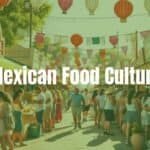



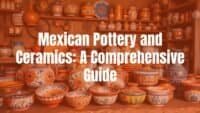

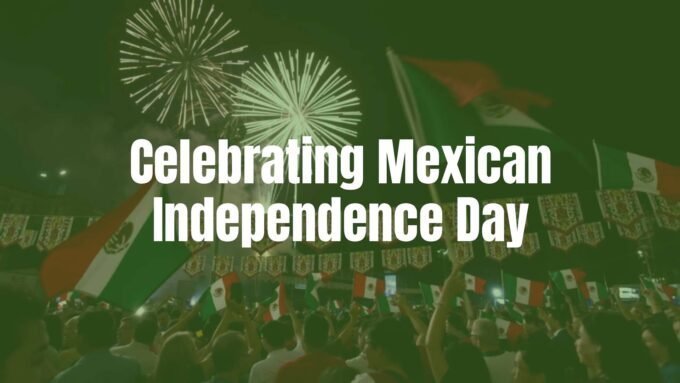
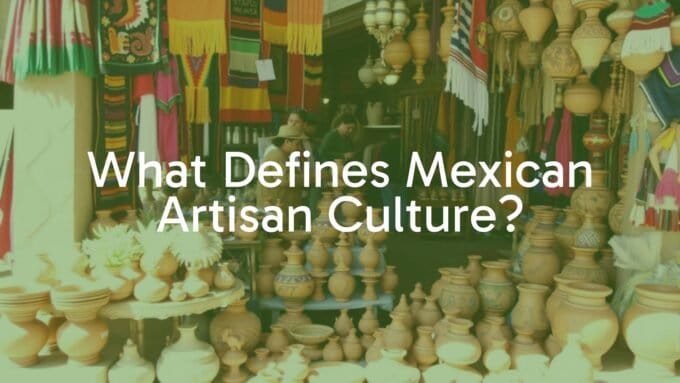
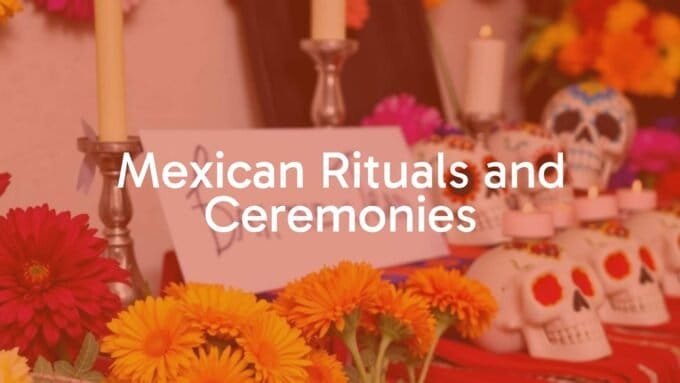

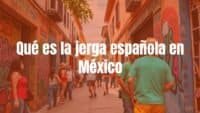
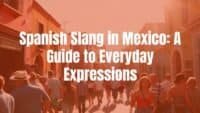
Leave a comment